Deflectors or information in the fire sprinkler cabinet make it easy to identify new fire sprinklers, but older models often take more effort
In the nearly 150 years since automatic fire sprinklers were first introduced, countless manufacturers have made their mark on the fire protection industry. But because many new manufacturers and products have entered the market, while other established companies have fallen off the map, identifying a fire sprinkler and finding a suitable replacement can sometimes be surprisingly difficult.
In this article, we describe what you need to know about identifying newer and older fire sprinklers and help you understand how to make a fire code-compliant choice between an exact replacement or a close substitute.
If you’re looking for a replacement fire sprinkler and already know which sprinkler you have, browse our selection of commercial and residential fire sprinklers or contact QRFS and we’ll look it up in our SIN directory.
Marked deflector plates provide a starting point for figuring out which sprinkler you have
Most fire sprinklers feature the same basic components: a sealing assembly (plug) that keeps water or air from escaping prematurely, a heat-sensitive element (glass bulb or metal link) that releases the plug at a certain temperature, a deflector that distributes water effectively, and a frame to keep everything in place. Together, these parts guarantee that water discharges from fire sprinkler supply pipes in time to contain fires and save lives.
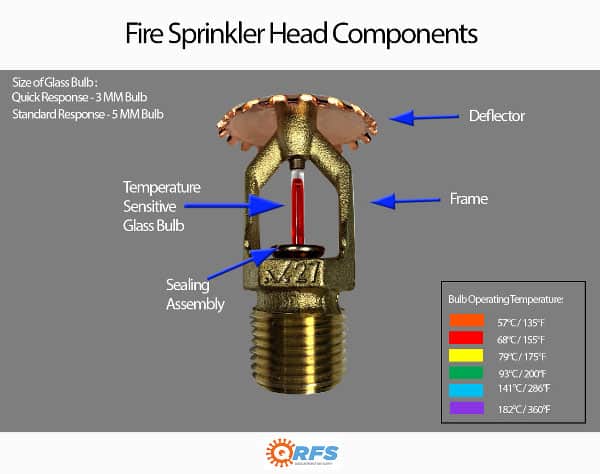
The deflector, a small plate located at the tip of each fire sprinkler head, is usually imprinted with all the information needed to order the manufacturer’s exact replacement or — if that sprinkler is discontinued or recalled — a code-compliant alternative.
Some sprinkler heads may be concealed behind a cover plate. To access the deflector, gently unscrew the cover plate. If it spins but doesn’t unscrew, softly tug at the plate until it detaches.
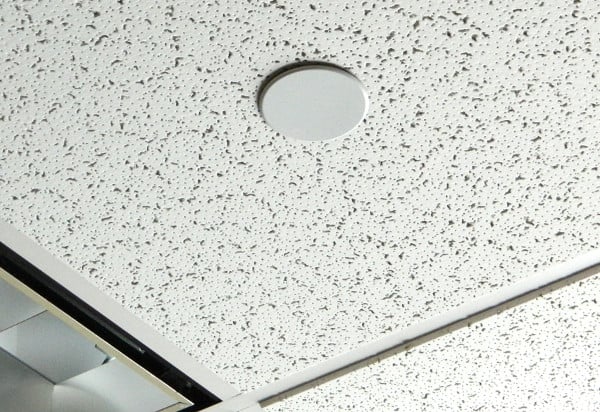
Word to the wise: be careful while inspecting your fire sprinkler. Touching the head is not recommended under any circumstances. An object as small as a coat hanger tip can break the sprinkler’s fusible link, triggering a deluge of water that could result in thousands of dollars in damage.
The sprinkler identification number (SIN) found on all NFPA-compliant sprinklers made since 2001 makes it easy to figure out a manufacturer and model
Each fire sprinkler manufactured in accordance with specifications from the National Fire Protection Association (NFPA) after December 31st, 2000 has a five-to-six digit sprinkler identification number, or SIN, printed on the deflector plate. By looking up that number in a SIN directory or your preferred search engine, you can sometimes locate data sheets that provide crucial details about a fire sprinkler’s design.
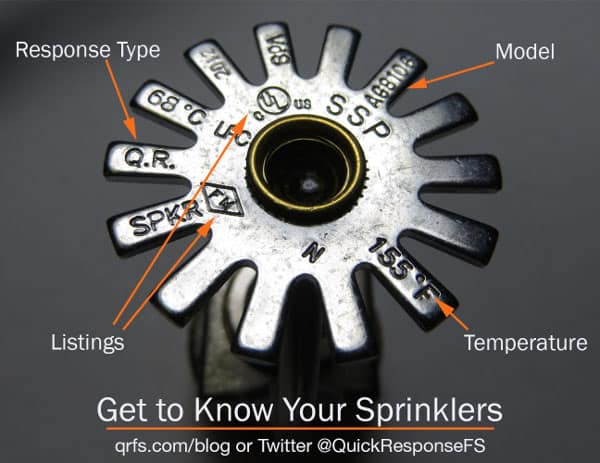
These data sheets list the K-factor (orifice size), response type, orientation, and maximum working pressure of a fire sprinkler, along with images, other performance characteristics, warnings, and installation guides.
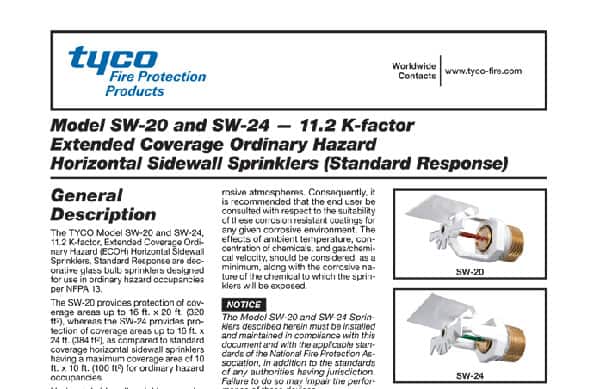
However, an exact match cannot be determined only with the SIN number. One SIN may refer to a fire sprinkler model with different temperature ratings and finishes. Combining this information with the temperature rating printed on the deflector and the matching finish can lead to an exact match.
If searching by a SIN number doesn’t quickly turn up a datasheet — or leads to other, older documents — your sprinkler may have been discontinued or replaced by a different model.
If you’ve located your SIN and want to search for an exact replacement, browse our selection of commercial and residential fire sprinklers or contact QRFS and we’ll look it up in our SIN directory.
The list in your sprinkler cabinet can tell you which sprinklers are installed in your building
An NFPA-compliant system has a selection of spare sprinkler heads kept in a sprinkler cabinet. In addition to holding spare heads and compatible wrenches, the cabinet must contain a list of the building’s sprinklers, including the SIN (or other identifying characteristics) and a general description for each one.
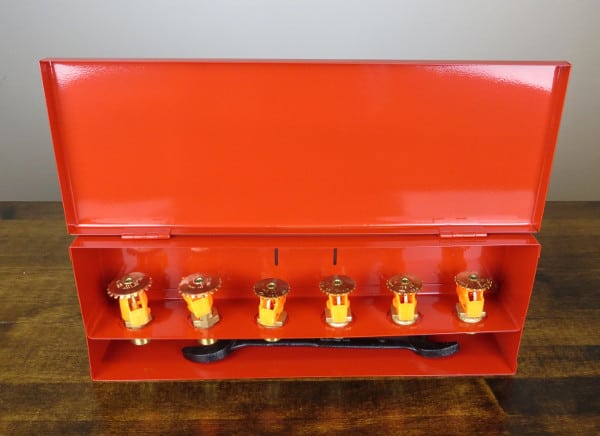
When this list includes sprinklers without a SIN, entries must also include the manufacturer, model, orifice, the orientation (describing if the sprinkler is an upright, sidewall, pendent, or another type), and pressure rating. While that’s more than enough information to identify a sprinkler, it’s important to use this information carefully: many buildings have multiple types of sprinklers installed and these models cannot be mixed and matched.
Sprinklers made before 2001 don’t have a SIN, and some SINs belong to manufacturers or products that are no longer available
Older fire sprinklers weren’t required to have a SIN. Instead, those made before 2001 feature other marks, including proprietary logos and lettering stamped on the frame or deflector plate. Some sprinklers may currently be sold by a different manufacturer under a different model name, or discontinued entirely.
It’s sometimes possible to identify the sprinkler in question by looking at other information on its deflector or frame. Many once-popular models were manufactured by companies now merged with Tyco Fire Products, including Central Sprinkler Company (CSC), Gem Sprinkler Company, Grinnell Corporation, and Star Sprinkler Incorporated (Star). Some, but not all, of these products are still sold as Tyco-branded sprinklers.
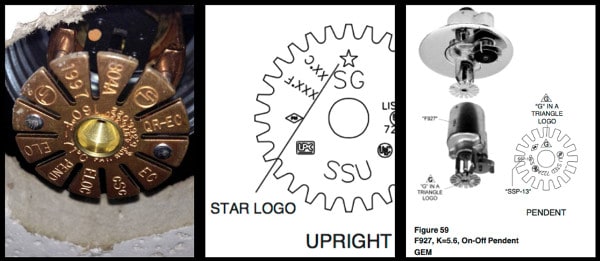
But searches for these sprinklers can be difficult. Some manufacturers, like Gem, featured their model numbers on the body of the sprinkler rather than the deflector, making them difficult or impossible to view without first removing the sprinkler. Central’s sprinkler (pictured above left) lists the model “ELOC” on the bottom left, but it’s difficult to tell at a glance which combination of letters refers to the exact model.
Searching by the manufacturer or model number may turn up some documentation, such as an update to a manufacturer’s catalog. But dated product catalogs, discontinuation notices, or dead-end searches often provide too little information to find a comparable substitute, to say nothing of an exact replacement. For example, many (but not all) of the Star LD-2 sprinklers pictured below are now sold as Tyco’s TY-L Series, and this might not be evident after a search.
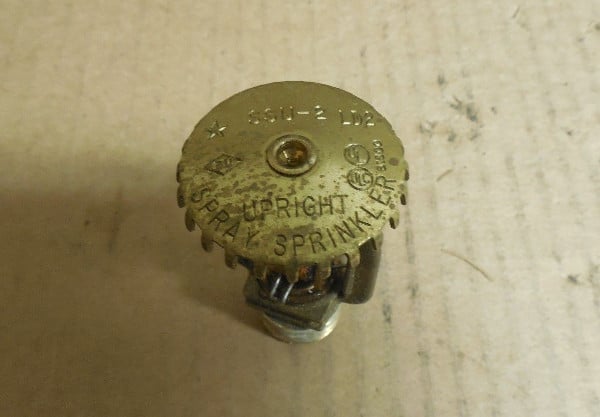
Still, some important characteristics of a sprinkler can be gleaned by taking a careful look. Standard-response and quick-response sprinklers, the two most common response types in commercial systems, can be distinguished by the diameter of their glass bulb, which is either 3 millimeters (quick response) or 5 millimeters (standard response).
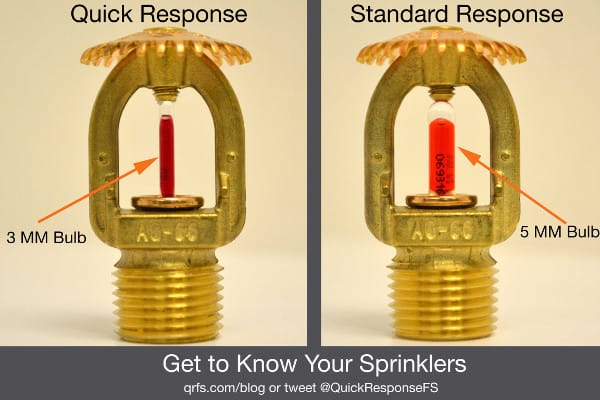
If the temperature rating isn’t listed on the fire sprinkler’s deflector, look for a glass bulb — the color of the liquid provides an indicating range for the activation temperature. In general, darker colors are paired with sprinklers that activate at higher temperatures. Most sprinklers feature an orange or red bulb, indicating that the activation temperature is between 135F and 170F, or a yellow or green bulb, for activation at temperatures between 175F and 225F.
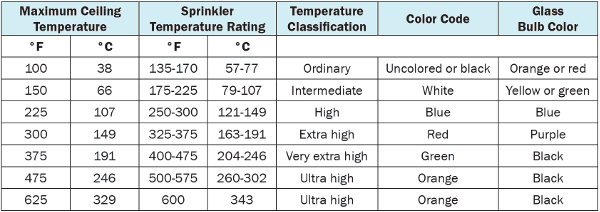
Do I need to replace an older fire sprinkler? What if I can’t identify it?
If you’ve discovered that your fire sprinklers are old or no longer sold, don’t panic: their simple design allows many of them to remain in service for decades. Still, NFPA rules require that sprinklers be replaced — or at least laboratory-tested — after a set length of time.
In general, standard response fire sprinklers must be replaced or tested after 50 years in service and then at 10-year intervals thereafter. Fast-response models (with the exception of ESFR and CMSA models) must be tested or replaced after 25 years in service and then at 10-year intervals, whereas dry sprinklers must be tested or replaced after 20 years in service and then at 10-year intervals. In addition, sprinklers exposed to corrosive or otherwise harsh environments may need to be tested or replaced every five years, unless they are listed as corrosion-resistant, in which case it’s every 10 and then every five. For a complete guide to all the latest testing or replacement intervals, including other special models and installation environments, read this: Fire Sprinkler Testing Procedures & Replacement in NFPA 25.
Regardless of service life, any sprinkler failing a visual inspection must be replaced.
From the 2023 edition of NFPA 25
5.2.1.1.1* Any sprinkler that shows signs of any of the following shall be replaced:
(1) Leakage
(2) Corrosion detrimental to sprinkler performance
(3) Physical damage
(4) Loss of fluid in the glass bulb heat-responsive element
(5) Loading detrimental to sprinkler performance
(6) Paint other than that applied by the sprinkler manufacturer, detrimental to sprinkler performance
Additionally, if a sprinkler has a mismatched or missing cover plate or escutcheon and a listed replacement is no longer available, it must be replaced.
5.2.1.1.5.1 Where the listed escutcheon or coverplate from a listed assembly is missing and is no longer commercially available, the sprinkler shall be replaced.
Fire sprinklers in the spare cabinet must also be kept up-to-date. Buildings in compliance with NFPA 25 keep a stock of at least six extra heads but sometimes 24 or more of them, depending on the total number currently in service. If the makeup of the fire sprinklers in a building changes, the contents of the sprinkler cabinet must change along with it.
5.4.1.6.4 The number of spare sprinklers in the cabinet shall be based on the number of sprinklers in the protected facility as follows:
(1) For protected facilities having under 300 sprinklers – no fewer than 6 sprinklers
(2) For protected facilities having 300 to 1000 sprinklers – no fewer than 12 sprinklers
(3) For protected facilities having over 1000 sprinklers – no fewer than 24 sprinklers5.4.1.6* A supply of at least six spare sprinklers shall be maintained on the premises so that any sprinklers that have operated or been damaged in any way can be promptly replaced.
5.4.1.6.1 The sprinklers shall correspond to the types and temperature ratings of the sprinklers in the property.
What do I need to know to replace a fire sprinkler and be in compliance with codes?
If your fire sprinkler has been discontinued or recalled, or if finding reliable information proves too difficult, a model with matching characteristics can be installed in its place.
Replacement fire sprinklers must be appropriate for the characteristics of the space they’re installed in and share many characteristics with the ones they’re replacing, including K-factor, temperature rating, response type, and size. However, the NFPA 25’s explanatory text clarifies that a fire sprinkler with the same manufacturer, make, or model isn’t required.
From the 2023 edition of NFPA 25
5.4.1.3* Replacement sprinklers shall have the proper characteristics for the application intended, which include the following:
(1) Style
(2) Orifice size and K-factor
(3) Temperature rating
(4) Coating, if any
(5) Deflector type (e.g., upright, pendent, sidewall)
(6) Design requirements5.4.1.5* Special and quick-response sprinklers as defined by NFPA 13 shall be replaced with sprinklers of the same orifice, size, temperature range and thermal response characteristics, and K-factor.
A.5.4.1.5 It is imperative that any replacement sprinkler have the same characteristics as the sprinkler being replaced. If the same temperature range, response characteristics, spacing requirements, flow rates, and K-factors cannot be obtained, a sprinkler with similar characteristics should be used, and the system should be evaluated to verify the sprinkler is appropriate for the intended use. With regard to response characteristics, matching identical response time index (RTI) and conductivity factors are not necessary unless special design considerations are given for those specific values.
NFPA rules also stipulate that fire sprinkler heads manufactured before 1953, called “old-style” sprinklers, may be replaced by more modern versions or by other old-style models.
From the 2020 edition of NFPA 25
5.4.1.3.1* Spray sprinklers shall be permitted to replace old-style sprinklers.
A.5.4.1.2.1 Old-style sprinklers are permitted to replace existing old-style sprinklers. Old-style sprinklers should not be used to replace standard sprinklers without a complete engineering review of the system.
In all cases, newly installed fire sprinklers should be unused and approved by UL, FM, or another organization that specializes in their evaluation and “lists” them.
5.4.1.4 Only new, listed sprinklers shall be used to replace existing sprinklers.
Many manufacturers offer durable, code-compliant alternatives to broken or obsolete fire sprinklers
If you need additional fire sprinklers to resupply an understocked sprinkler cabinet or to replace heads that can’t pass inspection, browse QRFS’s selection of fire sprinklers from Senju, Tyco, Victaulic, and Viking. Each product page lists the essential characteristics — from SIN to K-factor to response type — needed to find a match with an existing supply of fire sprinklers.
Looking for an exact replacement and still need help? Contact us at 888.361.6662 or support@qrfs.com. We’ll look up your SIN in our directory and see if we have a match for your current model.
This blog was originally posted at QRFS.com/blog. If this article helped you, check us out at Facebook.com/QuickResponseFireSupply or Twitter @QuickResponseFS.


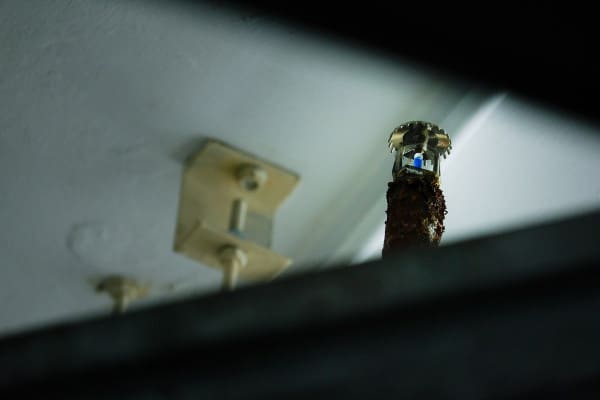
I need around 42 sprinkler escutcheons for my cSc heads. They have falling down over the years and been discarded because they separated. They are the flat surface style with a disc size of 3 5/8″ OD, 2 5/16″ inside and over 13/16″ height. Are these still available?
Michael, we will have someone from our Support Team reach out to you!
I’m looking to make my sprinklers part of the design for a steampunk like look for a modern barn house. Any suggestions for “designer heads”?
Stephen, thanks for reach out. Our QRFS Support Team will follow up via email with some suggestions!
I have the same issue as Michael Kennedy
May 4, 2020 at 11:30 pm
I need around 42 sprinkler escutcheons for my cSc heads. They have falling down over the years and been discarded because they separated. They are the flat surface style with a disc size of 3 5/8″ OD, 2 5/16″ inside and over 13/16″ height. Are these still available?
Where can I buy one
Ronald — thank you for reaching out. We will have someone from our QRFS Customer Support Team contact you.
Hi,
I need to replace 120 pendent sprinkler heads. I think the brand is star the ssp is 722a on the deflector and L02 near the threaded inlet. Can anyone identify the k factor ?
Tim — Thank you for reaching out. We will have someone from our QRFS Customer Support Team contact you. Email them any requests to get faster service!
I need to replace my home fire sprinkler heads. The house was built in 1986 and when I bought it, all the sprinkler heads were painted on, and do not know the type of sprinkler they are. Some of them are leaking and with some bad smelling water, and destroying the ceiling /drywalls.
Kofi — depending on how thick the paint is on the sprinklers, look for any identifying marks on the frame or deflector. Otherwise, you can take a picture of a sprinkler (least paint on it available) and email it to QRFS customer service. We’ll see if we can discern the model. Another option is to consult with a local fire protection contractor who can examine your system.
need to replace some old central ec 10 . need some help identifying a replacement
Kirk — Central was absorbed by Tyco, so Tyco often has a direct replacement Tyco sprinkler or simply started manufacturing the old model with a Tyco sprinkler identification number. This request has been forwarded over to QRFS customer service, who can help ID what you have and a replacement. In future, you can also email support@qrfs.com for faster service than via the blog.
I need to replace some old CSC upright heads in warehouse ceiling can I send you some pictures to help me identify suitable replacement?
Greg — Yes, you can send this request and any pictures—of the deflector, each side, and all markings—to support@qrfs.com. We’ll also forward this to support and have them reach out to you. Thanks!